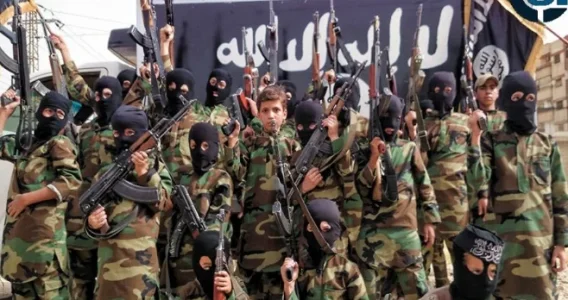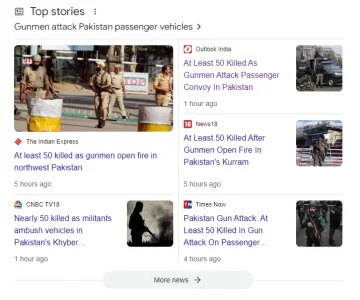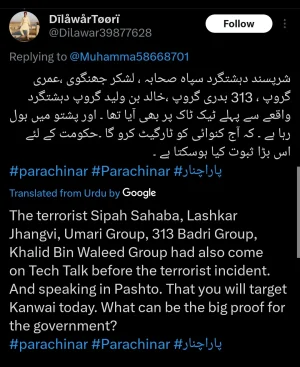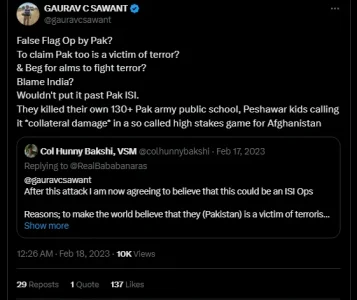- Joined
- Sep 29, 2024
- Messages
- 4,256
- Likes
- 22,672
Saar India Saar please don't develop new missiles saar...
View: https://twitter.com/NimrahJaved_/status/1857434804465086647
South Asia’s security environment is already precarious, with unresolved territorial disputes, deep-seated mistrust, and the presence of two nuclear-armed rivals—India and Pakistan. The situation is further exacerbated by India’s steadfast refusal to engage in meaningful dialogue on arms control while aggressively expanding its conventional and missile capabilities. This dual strategy not only heightens regional instability but also diminishes any prospects for peaceful coexistence. The recent vote at the United Nations General Assembly on the resolution “Conventional Arms Control at the Regional and Subregional Levels” underlines this troubling trend. While the resolution, proposed by Pakistan and Syria, was adopted with overwhelming support from 179 nations, India stood alone in opposing it. This act, coupled with its accelerated missile development program, sends a clear message: India is prioritizing military dominance over regional stability.
India’s opposition to the resolution is particularly troubling given its context. The resolution advocates for restraint, transparency, and dialogue in conventional arms development—principles that are essential for reducing tensions and fostering stability in conflict-prone regions like South Asia. By voting against it, India has signaled its unwillingness to address the growing arms race in the region. This refusal to participate in frameworks for arms control raises serious questions about India’s intentions and its commitment to the broader goal of regional peace.
Simultaneously, India continues to invest heavily in enhancing its missile capabilities, further aggravating the regional security dilemma. The recent successful test of the Long-Range Land Attack Cruise Missile (LRLACM) is a stark example of this trend. The LRLACM, an advanced variant of the Nirbhay cruise missile, boasts a range of over 1,000 kilometers and is equipped with cutting-edge technology, including terrain-hugging capability and dual-platform deployment. It is designed for precision strikes deep into enemy territory, with the ability to evade radar detection and perform complex maneuvers mid-flight. This capability provides India with significant standoff strike options, enabling it to target critical infrastructure and strategic assets far beyond its borders.
For Pakistan, the implications of these developments are profound. India’s refusal to engage in arms control discussions leaves Pakistan with no avenue for dialogue to mitigate the risks posed by such advancements. The LRLACM’s capabilities, particularly its precision and range, directly threaten Pakistan’s military infrastructure, including command and control centers, airbases, and other strategic assets. This undermines Pakistan’s deterrence posture, which relies on maintaining a balance against India’s conventional superiority. By rejecting arms control frameworks, India effectively pushes Pakistan to invest in countermeasures, perpetuating an arms race that drains resources and increases the likelihood of miscalculation.
India’s missile developments are not occurring in isolation but are part of a broader strategy to achieve regional military dominance. Over the past decade, India has systematically expanded its conventional and strategic arsenals, with advancements ranging from hypersonic glide vehicles to precision-guided munitions. These efforts, often justified under the guise of self-defense, reflect a shift in India’s strategic posture toward counterforce capabilities—aimed at neutralizing an adversary’s strategic assets before they can be used. This shift is particularly alarming in the context of South Asia, where the risk of crisis escalation is already high.
The introduction of the LRLACM into India’s arsenal further complicates crisis stability in the region. In a high-tension scenario, the deployment of such a missile could be interpreted by Pakistan as an imminent threat, prompting preemptive responses that escalate the conflict. The missile’s advanced capabilities, including its ability to evade detection and strike with precision, lower the threshold for the use of force. This creates a highly volatile situation where miscalculation or misinterpretation could lead to catastrophic consequences. Without mechanisms for dialogue or restraint, the risks posed by such scenarios are unacceptably high.
India’s reluctance to support the UN resolution also reveals a troubling inconsistency in its approach to arms control. While India has long advocated for global non-proliferation measures, its actions at the regional level suggest a selective application of these principles. By rejecting regional arms control frameworks while aggressively pursuing its own military advancements, India undermines the very principles it claims to uphold. This behavior not only isolates India diplomatically but also fuels mistrust among its neighbors, particularly Pakistan.
For Pakistan, the path forward is fraught with challenges. While it remains essential for Pakistan to continue advocating for arms control and transparency, India’s refusal to engage in such discussions limits the effectiveness of these efforts. At the same time, Pakistan must invest in maintaining and modernizing its own defense capabilities to counterbalance India’s advancements. However, this response risks perpetuating the cycle of action and reaction that has long characterized South Asia’s security environment.
The international community has a critical role to play in addressing this growing instability. India’s actions, particularly its rejection of arms control discussions and its relentless pursuit of advanced conventional weapons, pose a direct challenge to regional stability. Major powers must hold India accountable for its refusal to engage in dialogue and push for the establishment of arms control mechanisms in South Asia. Moreover, there is a need for greater oversight of missile technology proliferation to prevent these advancements from spiraling into a full-blown arms race.
India’s refusal to support the UN resolution and its concurrent missile advancements represent a dangerous trajectory for South Asia. While India may view these actions as a means of securing its strategic objectives, the broader implications for regional stability are deeply concerning. By prioritizing unilateral military advancements over collaborative security arrangements, India risks destabilizing an already fragile security environment, increasing the likelihood of conflict.
The need for dialogue, transparency, and restraint has never been more urgent. Yet India’s current trajectory suggests a troubling disregard for these principles, placing South Asia on a precarious path where the risks of miscalculation and escalation loom large. For the region’s future, and for global stability, this trend must be addressed before it is too late.

India's Missile Advancements and Refusal of Arms Control: A Threat to South Asian Stability
South Asia’s security environment is already precarious, with unresolved territorial disputes, deep-seated mistrust, and the presence of two nuclear-armed rivals—India and Pakistan. The situation is further exacerbated by India’s steadfast…cissajk.org.pk
Every single text from a Piggy either in text or audio is literally always summed up as "GORA SAAR, CHEENKI SAAR, PLZ SAVE US!!!!!!!!!!!"












 carried by DONKEYS... not bad!
carried by DONKEYS... not bad! 



